 W
WThe 1st Division was an infantry division in the Imperial Japanese Army. Its call sign was the Jade Division . The 1st Division was formed in Tokyo in January 1871 as the Tokyo Garrison , one of six regional commands created in the fledgling Imperial Japanese Army. The Tokyo Garrison had responsibility for the eastern region of Honshū, centered on the Tokyo metropolitan area. The six regional commands were transformed into divisions under the army reorganization of 14 May 1888, based on recommendations by the Prussian military advisor Jakob Meckel to the Japanese government.
 W
WThe 1st Tank Division , was one of four armored divisions of the Imperial Japanese Army in World War II.
 W
WThe 1st Air Fleet also known as the Kidō Butai, was a name used for a combined carrier battle group comprising most of the aircraft carriers and carrier air groups of the Imperial Japanese Navy (IJN), during the first eight months of the Pacific War.
 W
WThe 2nd Tank Division , was one of four armored divisions of the Imperial Japanese Army in World War II.
 W
WThe 2nd Division was an infantry division in the Imperial Japanese Army. Its tsūshōgō was Courageous Division .
 W
WThe 3rd Tank Division , was one of four armored divisions of the Imperial Japanese Army in World War II.
 W
WThe 3rd Division was an infantry division in the Imperial Japanese Army. Its call sign was the Kō-heidan (幸兵団).
 W
WThe 4th Tank Division , was one of four armored divisions of the Imperial Japanese Army in World War II.
 W
WThe 4th Infantry Regiment was an infantry regiment in the Imperial Japanese Army. The regiment was attached to the 2nd Division. The regiment was raised at Sendai on 14 May 1888. The regiment participated in the Second Sino-Japanese War and The Pacific War.
 W
WThe '5th Division' was an infantry division of the Imperial Japanese Army. Its call sign was the Koi (Carp) Division . The 5th Division was formed in Hiroshima in January 1871 as the Hiroshima Garrison , one of six regional commands created in the fledgling Imperial Japanese Army. Its personnel were drafted from Hiroshima, Yamaguchi and Shimane.
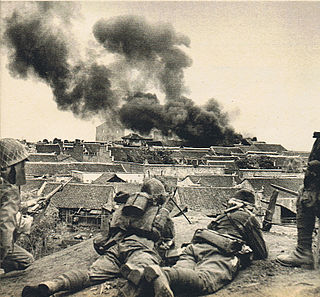 W
WThe 6th Division was an infantry division in the Imperial Japanese Army. Its call sign was the Bright Division .
 W
WThe 6th Fleet was a fleet of the Imperial Japanese Navy (IJN) that during World War II, had primary responsibility for the command of submarine operations.
 W
WThe 8th Fleet was a fleet of the Imperial Japanese Navy (IJN) established during World War II.
 W
WThe 9th Division was an infantry division in the Imperial Japanese Army. Its tsūshōgō code name was the Warrior Division or 1515 or 1573. The 9th Division was one of six infantry divisions newly raised by the Imperial Japanese Army after the First Sino-Japanese War (1894–1895). Its troops were recruited primarily from communities in the Hokuriku region of Japan (Ishikawa, Toyama and Fukui, with its headquarters located within the grounds of Kanazawa Castle.
 W
WThe 10th Division was an infantry division in the Imperial Japanese Army. Its tsūshōgō code name was the Iron Division . The 10th Division was one of six new infantry divisions raised by the Imperial Japanese Army in the aftermath of the First Sino-Japanese War, 1 October 1898. Its troops were recruited primarily from communities in the three prefectures of Hyōgo, Okayama and Tottori, plus a portion of Shimane. It was originally headquartered in the city of Himeji, and its first commander was Lieutenant General Prince Fushimi Sadanaru.
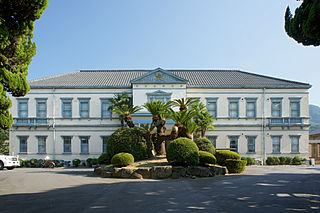 W
WThe 11th Division was an infantry division in the Imperial Japanese Army. Its tsūshōgō code name was the Brocade Division , and its military symbol was 11D. The 11th Division was one of six infantry divisions newly raised by the Imperial Japanese Army after the First Sino-Japanese War (1894–1895). The division received its colors on 1 October 1898 and was disbanded in September 1945. Its troops were recruited primarily from communities in the four prefectures of the island of Shikoku. It was originally headquartered in the city of Zentsuji, Kagawa, and its first commander was Lieutenant General Nogi Maresuke.
 W
WThe 12th Division was an infantry division in the Imperial Japanese Army. Its tsūshōgō code name was the Sword Division , and its military symbol was 12D. The 12th Division was one of six new infantry divisions raised by the Imperial Japanese Army after the First Sino-Japanese War (1894–1895). The division received its colors on 1 October 1898 and disbanded in September 1945. Its troops were recruited primarily from communities in the northern portion of the island of Kyūshū and it was originally headquartered within Kokura Castle
 W
WThe 13th Division was an infantry division in the Imperial Japanese Army. Its tsūshōgō code name was the Mirror Division , and its military symbol was 13D. The 13th Division was one of four new infantry divisions raised by the Imperial Japanese Army (IJA) in the closing stages of the Russo-Japanese War 1 April 1905, after it turned out what the entire IJA was committed to combat in Manchuria, leaving not a single division to guard the Japanese home islands from attack.
 W
WThe 15th Division was an infantry division in the Imperial Japanese Army. Its tsūshōgō code name was the Festival Division , and its military symbol was 15D. The 15th Division was one of four new infantry divisions raised by the Imperial Japanese Army in the closing stages of the Russo-Japanese War (1904–1905). With Japan's limited resources towards the end of that conflict, the entire IJA was committed to combat in Manchuria, leaving not a single division to guard the Japanese home islands from attack. The 15th Division was initially raised from men in the area surrounding Nagoya under the command of Lieutenant General Okihara Kofu.
 W
WThe 16th Division was an infantry division in the Imperial Japanese Army. Its tsūshōgō code name was the Wall Division , and its military symbol was 16D. The 16th Division was one of four new infantry divisions raised by the Imperial Japanese Army in the closing stages of the Russo-Japanese War (1904–1905). With Japan's limited resources towards the end of that conflict, the entire IJA was committed to combat in Manchuria, leaving not a single division to guard the Japanese home islands from attack. The 16th Division was initially raised from men in the area surrounding Kyoto 18 July 1905 under the command of Lieutenant General Yamanaka Nobuyoshi.
 W
WThe 17th Division was an infantry division in the Imperial Japanese Army. Its tsūshōgō code name was the Moon Division . The 17th Division was one of two infantry divisions raised by the Imperial Japanese Army immediately after the Russo-Japanese War (1904–1905). The division received its colors on 13 November 1907. Its original headquarters was in a suburb of the city of Okayama, and its troops were recruited primarily from communities in the three prefectures of Okayama, Hiroshima, and Shimane. The first commander of the division was Lieutenant General Ichinohe Hyoe.
 W
WThe 19th Division was an infantry division in the Imperial Japanese Army. Its tsūshōgō code name was the Tiger Division . It was also occasionally referred to in Korean accounts as Ranam Division, after the location of its main base. The 19th Division and the 20th Division were both raised as a garrison force for Korea. After Japan's victory in the Russo-Japanese War of 1904-1905, and subsequent occupation, and then annexation of Korea in 1910, the need was felt for a dedicated garrison force, raised from people with local knowledge. The 19th Division was stationed in far northeast Korea, in what is now North Hamgyong Province. The division received its colors on 24 December 1915 and headquarters have moved to Yongsan District 16 April 1916; however, the division was not considered combat-ready until 1918. The delay was due to limited funding available for the division to build its facilities in Korea and the need to recruit and train personnel from mainland Japan. In addition, the new division was beset with problems related to malaria and shigellosis at its main base at Ranam in northern Korea, having recorded 672 disease-related officers casualties during 1917. As result, the headquarters have moved to Ranam-guyok only 10 April 1919. The first commander of the 19th Division was Lieutenant General Tachibana Koichirō.
 W
WThe 20th Division was an infantry division in the Imperial Japanese Army. Its tsūshōgō code name was the Morning Division .
 W
WThe 33rd Division was an infantry division of the Imperial Japanese Army. Its call sign was the Bow Division . The 33rd Division was raised in Utsunomiya, Tochigi prefecture, simultaneously with 32nd, 34th, 35th, 36th and 37th Divisions. Its headquarters were initially in Sendai. It was raised from conscripts largely from the northern Kantō prefectures of Tochigi, Ibaraki and Gunma.
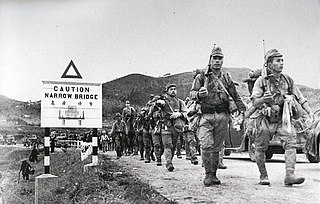 W
WThe 38th Division was an infantry division of the Imperial Japanese Army, activated 30 June 1939 in Nagoya, simultaneously with the 39th, 40th and 41st Divisions. Its call sign was the Swamp Division .
 W
WThe 42nd Division was an infantry division of the Imperial Japanese Army. Its call sign was the Distinction Division
 W
WThe 44th Division was an infantry division of the Imperial Japanese Army. Its call sign was the Orange Division
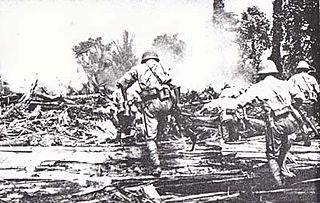 W
WThe 51st Division was an infantry division of the Imperial Japanese Army. Its call sign was the Base Division . It was formed on 10 July 1940 at Utsunomiya, Tochigi, simultaneously with 52nd, 54th, 55th, 56th, and 57th divisions. The 51st Division was initially assigned to the Eastern District Army and placed under command of Lieutenant General Kenichiro Ueno.
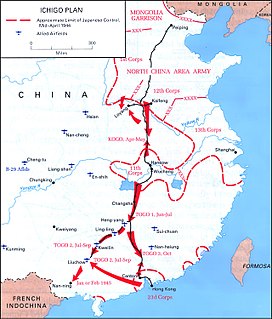 W
WThe 68th Division was an infantry division of the Imperial Japanese Army. Its call sign was the Cypress Division . It was formed on 2 February 1942 in Jiujiang city as a class C (security) division, simultaneously with the 69th and 70th divisions. The backbone of security division has consisted of the eight independent infantry battalions, and it does not have an artillery regiment. The nucleus for the formation was the 14th Independent mixed brigade.
 W
WThe 84th Division was an infantry division in the Imperial Japanese Army. Its call sign was the Sudden Division .It was created July 6 1944 in Himeji. It was a triangular division. The divisional backbone was the 54th Division headquarters.
 W
WThe 102nd Division was an infantry division of the Imperial Japanese Army. Its call sign was the Uproot Division .The division was formed on 15 June 1944 in Visayas. The nucleus of the formation was the 31st Independent Mixed Brigade. The 102nd division was a Type C(hei) security division, therefore the division backbone comprised independent infantry battalions instead of infantry regiments.
 W
WThe 116th Division was an infantry division of the Imperial Japanese Army. Its call sign was Storm Division . It was formed on 15 May 1938 in Kyoto as a B-class square division, simultaneously with the 106th Division. The nucleus for the formation was the 16th Division headquarters. The division was originally subordinated to the Central China Expeditionary Army.
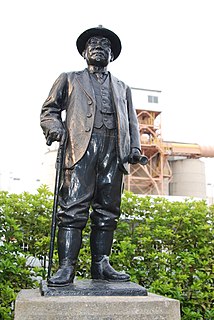 W
WAsano zaibatsu 浅野財閥, one of the major second-tier zaibatsu (conglomerates) in Japan, was founded in 1887 by Asano Sōichirō 浅野総一郎 with support from Shibusawa Eiichi 渋沢栄一, the founder of the Shibusawa zaibatsu 渋沢財閥 and "father of Japanese capitalism".
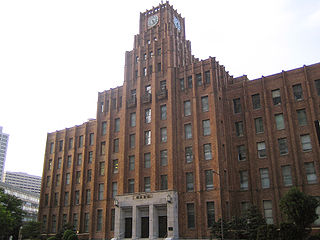 W
WDōmei News Agency was the official news agency of the Empire of Japan.
 W
WEnkaku-ji was a Rinzai Buddhist temple and royal bodaiji of the Ryūkyū Kingdom, in Naha, Okinawa.
 W
WThe Great Japan Youth Party , later known as the Great Japan Sincerity Association , was a nationalist youth organization in the Empire of Japan modeled after Nazi Germany's Hitler Youth. It was active from 1937 until its dissolution in 1945.
 W
WHeijō Shrine was a Shinto shrine in Pyongyang during the Japanese colonial rule in Korea. Its name derived from the Japanese name for Pyongyang during its occupation of Korea. It was established in 1913, and was defunct after 1945. The shrine's main annual festival was held on October 2.
 W
WThe Immaculate Conception Cathedral (無原罪の聖母司教座聖堂) also St. Mary's Cathedral, often known as Urakami Cathedral after its location Urakami, is a Roman Catholic cathedral located in Motoomachi, Nagasaki, Japan.
 W
WThe Imperial General Headquarters was part of the Supreme War Council and was established in 1893 to coordinate efforts between the Imperial Japanese Army and Imperial Japanese Navy during wartime. In terms of function, it was approximately equivalent to the United States Joint Chiefs of Staff and the British Chiefs of Staff Committee.
 W
WImperial Japanese Airways was the national airline of the Empire of Japan during World War II.
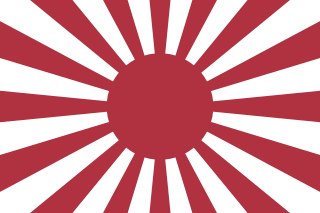 W
WThe Imperial Japanese Army was the official ground-based armed force of the Empire of Japan from 1868 to 1945. It was controlled by the Imperial Japanese Army General Staff Office and the Ministry of the Army, both of which were nominally subordinate to the Emperor of Japan as supreme commander of the army and the Imperial Japanese Navy. Later an Inspectorate General of Aviation became the third agency with oversight of the army. During wartime or national emergencies, the nominal command functions of the emperor would be centralized in an Imperial General Headquarters (IGHQ), an ad hoc body consisting of the chief and vice chief of the Army General Staff, the Minister of the Army, the chief and vice chief of the Naval General Staff, the Inspector General of Aviation, and the Inspector General of Military Training.
 W
WThe Imperial Japanese Navy was the navy of the Empire of Japan from 1868 to 1945, when it was dissolved following Japan's surrender in World War II. The Japan Maritime Self-Defense Force (JMSDF) was formed between 1952–1954 after the dissolution of the IJN.
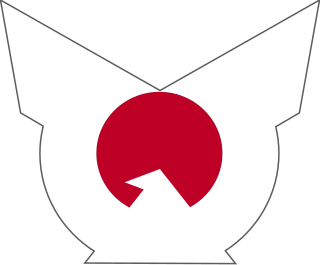 W
WThe Imperial Rule Assistance Association , or Imperial Aid Association, was the Empire of Japan's wartime organization created by Prime Minister Fumimaro Konoe on 12 October 1940, to promote the goals of his Shintaisei movement. It evolved into a "statist" ruling political party which aimed at removing the sectionalism in the politics and economics in the Empire of Japan to create a totalitarian one-party state, in order to maximize the efficiency of Japan's total war effort in China. When the organization was launched officially, Konoe was hailed as a "political savior" of a nation in chaos; however, internal divisions soon appeared.
 W
WThe territorial conquests of the Empire of Japan in the Western Pacific and East Asia regions began in 1895 with its victory over Qing China in the First Sino-Japanese War. Subsequent victories over the Russian and German Empires expanded Japanese rule to Taiwan, Korea, Micronesia, and southern Sakhalin. In 1931, Japan invaded Manchuria, resulting in the establishment of the puppet state of Manchukuo the following year; thereafter, Japan adopted a policy of founding and supporting puppet states in conquered regions. These conquered territories became the basis for the Greater East Asia Co-Prosperity Sphere in 1940.
 W
W W
WThe Ministry of Agriculture and Commerce or Trade was a cabinet-level ministry in the government of the Empire of Japan from 1881-1925. It was briefly recreated as the Ministry of Agriculture and Commerce during World War II
 W
WThe Ministry of Greater East Asia was a cabinet-level ministry in the government of the Empire of Japan from 1942 to 1945, established to administer overseas territories obtained by Japan in the Pacific War and to coordinate the establishment and development of the Greater East Asia Co-Prosperity Sphere.
 W
WThe Ministry of Munitions was a cabinet-level ministry in the final days of the Empire of Japan, charged with the procurement and manufacture of armaments, spare parts and munitions to support the Japanese war effort in World War II.
 W
WThe Army Ministry , also known as the Ministry of War, was the cabinet-level ministry in the Empire of Japan charged with the administrative affairs of the Imperial Japanese Army (IJA). It existed from 1872 to 1945.
 W
WThe Navy Ministry was a cabinet-level ministry in the Empire of Japan charged with the administrative affairs of the Imperial Japanese Navy (IJN). It existed from 1872 to 1945.
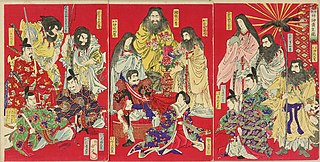 W
WThe modern system of ranked Shinto shrines was an organizational aspect of the establishment of Japanese State Shinto. This system classified Shinto shrines as either official government shrines or "other" shrines. The official shrines were divided intoImperial shrines (kampeisha), which are parsed into minor, medium, or major sub-categories; and National shrines (kokuheisha), which are similarly categorized as minor, medium, or major.
 W
WMotobu Airfield is a World War II airfield on the Motobu Peninsula of Okinawa, near the East China Sea coast. The airfield was deactivated after 1945.
 W
WThe National Spiritual Mobilization Movement was an organization established in the Empire of Japan as part of the controls on civilian organizations under the National Mobilization Law by Prime Minister Fumimaro Konoe.
 W
WThe Chisso Corporation , since 2012 reorganized as JNC, is a Japanese chemical company. It is an important supplier of liquid crystal used for LCDs, but is best known for its role in the 34-year-long pollution of the water supply in Minamata, Japan that led to thousands of deaths and victims of disease.
 W
WThe Second Philippine Republic, officially known as the Republic of the Philippines and also known as the Japanese-sponsored Philippine Republic, was a Japanese puppet state established on October 14, 1943, during the Japanese occupation.
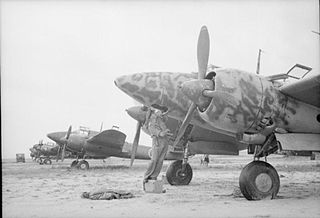 W
WThe Japanese Third Air Army was formed on 23 July 1942 and headquartered at Singapore until the end of World War 2 when it was disbanded. Its final commander was Satoshi Kinoshita. Its units consisted of the 5th, 9th and 55th Air Divisions. The 3rd Air Army was responsible for South East Asia.